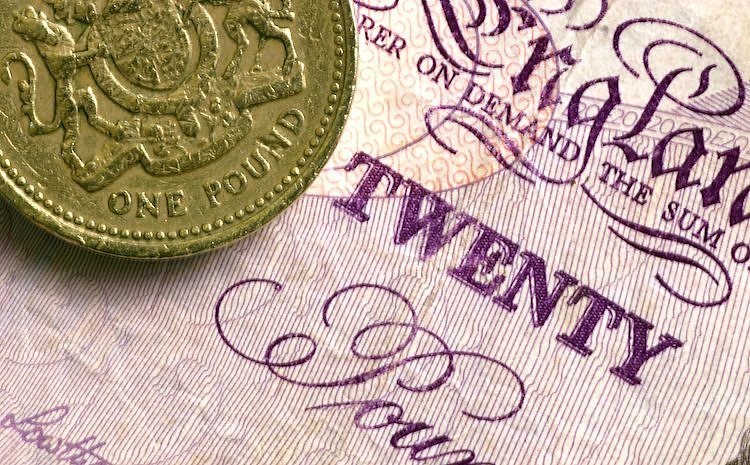Jobs
Euro and Sterling up, USD down ahead of US jobs data

The UK’s Labour Party is set to win a highly anticipated landslide victory in the general election. Cable is upbeat near 1.2770 and the FTSE futures are pointing at a positive start to the session.
With the general election behind us – and more political uncertainty and hopefully less scandals ahead – the Labour win is seen as being net positive for the pound and the British stocks. Cable fell from near 1.50 pre-Brexit to almost parity at the peak of the Tory disillusion with Liz Truss mini budget crisis, the changing government gives hope that at least a part of the weakness could be recovered. For stocks, the small and medium sized stocks are expected to perform stronger than the FTSE 100 – which is more exposed to the global economic dynamics due to its high concentration of energy and mining stocks. But both should see the benefits of the upcoming rate cut from the Bank of England (BoE) – and additionally the other major central banks into the year end. The FTSE 100 was up by 0.86% yesterday on Labour victory vibes and should easily throw itself above the 50-DMA before the weekly closing bell.
In France, the situation looks better from a market perspective, as well. The latest polls suggest that Marine Le Pen’s National Rally could fall ‘well short’ of a majority at this weekend’s second and final tour of legislative elections. The party is forecasted to win between 190 to 250 seats out of 577, which will leave it significantly below the 289 majority needed to pass bills easily. As such, the French will probably not see their taxes lowered as promised by Le Pen and investors will hopefully not see the French debt levels explode irresponsibly following this chaotic ‘snap election’ parentheses. Investors are now in a hurry to return to French assets and the euro at discounted prices not to miss the post-election rally next Monday. The spread between the German and French 10-year yield fell below 70 from last week’s peak of 86, the CAC 40 jumped past the 200-DMA yesterday and is testing a major Fibonacci level to the upside before the weekly closing bell. The index remains well below the 8000 mark where it was trading when Macron announced the snap election, it will probably shrug off the election fear with a further recovery but in the medium run, a hung government will prevent the French from moving forward with any reforms : that’s positive when you think of unsustainable tax cuts but that’s not necessarily positive for the long term growth as other reforms will also be blocked. Anyway, the EURUSD extends gains past 1.0820 this morning, and given the FOMO a post-election rally in the euro, we might see further gains before the weekly closing bell.
Jobs day
The US will reveal its latest jobs figures today and the Federal Reserve (Fed) doves are waiting in ambush to boost their rate cut bets. The US economy is expected to have added around 190K new nonfarm jobs in June, down from 272K printed a month earlier and the wages growth is seen weaker. A weaker-than-expected set of data should further fuel the Fed rate cut bets, weigh on the yields and the US dollar, while a positive surprise should get the Fed doves to scale back their rate cut bets – that have been rising lately thanks to a set of soft economic data and dovish Fed comments – and throw a floor under the yields and back the dollar. The US dollar slipped below its 50-DMA yesterday on the back of the rising dovish Fed voices and a political-led rebound in euro and the pound. The US dollar index is getting ready to test the 105 support to the downside. The major support to this year’s bullish trend is at a distant 104.20 level – meaning that the dollar has room to soften if the data satisfies the Fed doves.
For equities, a soft data – if not too soft – wouldn’t be bad. The thing is the major US indices do not reflect – not even a bit – the underlying economic dynamics right now. They are mostly decoupled from the economic reality of high inflation and slowing growth. The only thing that matters right now is the strength of appetite for technology stocks and that remains very strong – and is supported by the expectation of upcoming rate cuts.
TSM just hit the 1000 mark this week in Taiwan for the first time in history, after more than doubling its stock price since the beginning of last year. Nvidia is responsible for a whopping 30% of gains that the S&P500 printed this year, while the Dutch ASML accounted for around 38% of the gains of the Stoxx 50 this year. As such, a chart from Bloomberg shows how the correlations between the stocks in the US and the European markets have never been this low since more than a decade. This is alarming, mind you, because the lower correlation, the lower the diversification within the index, and the lower diversification the higher the risk of a sudden and a sharp downturn. The question is: when.









